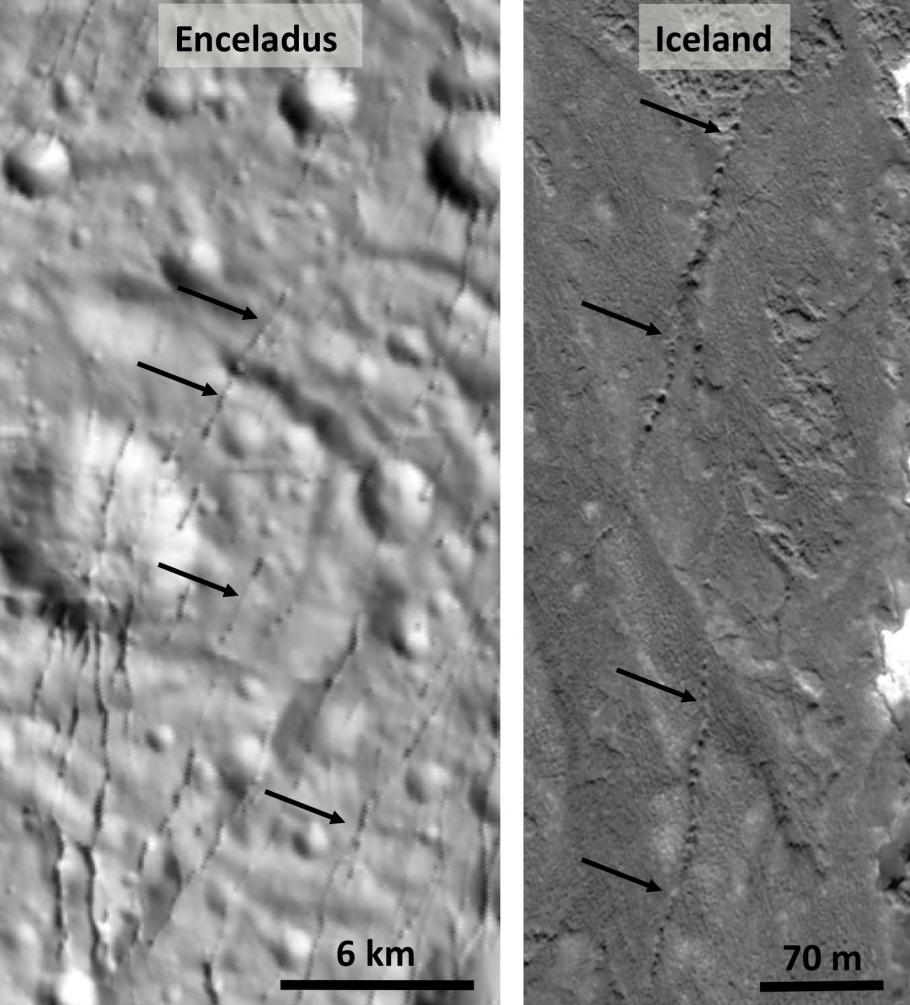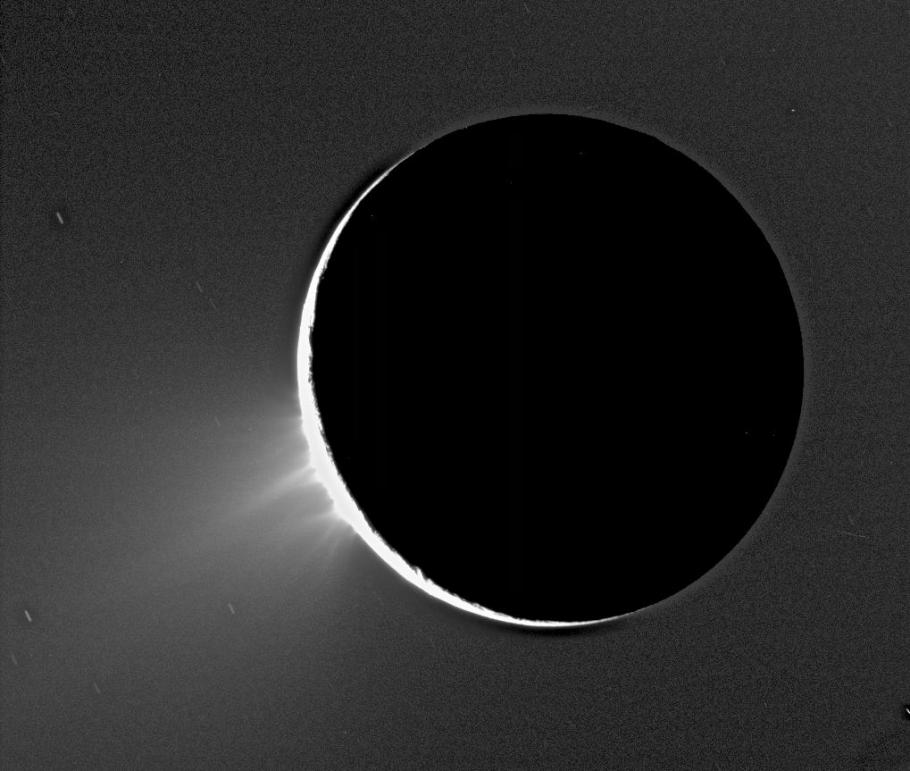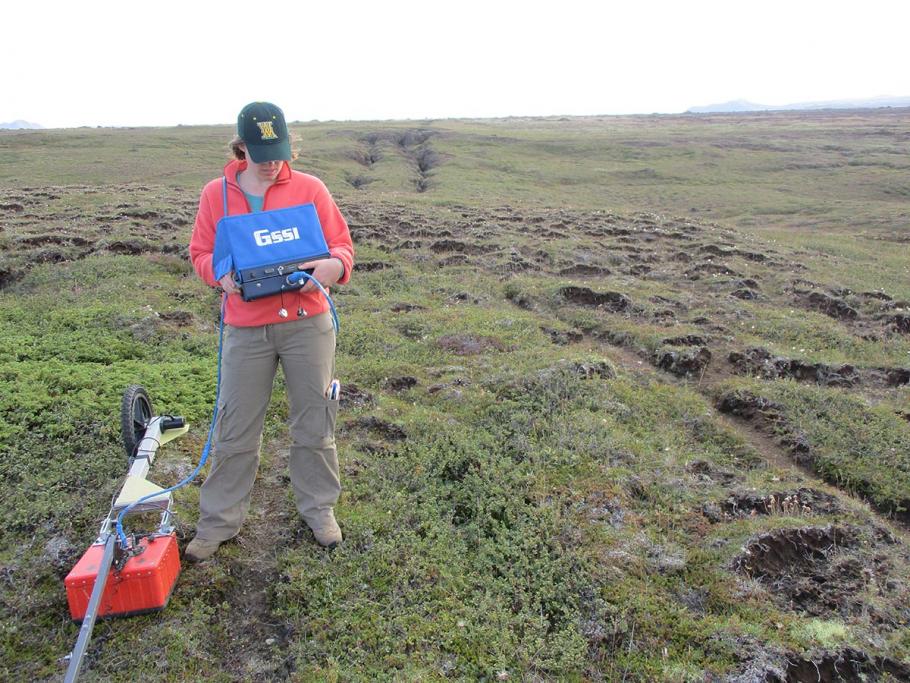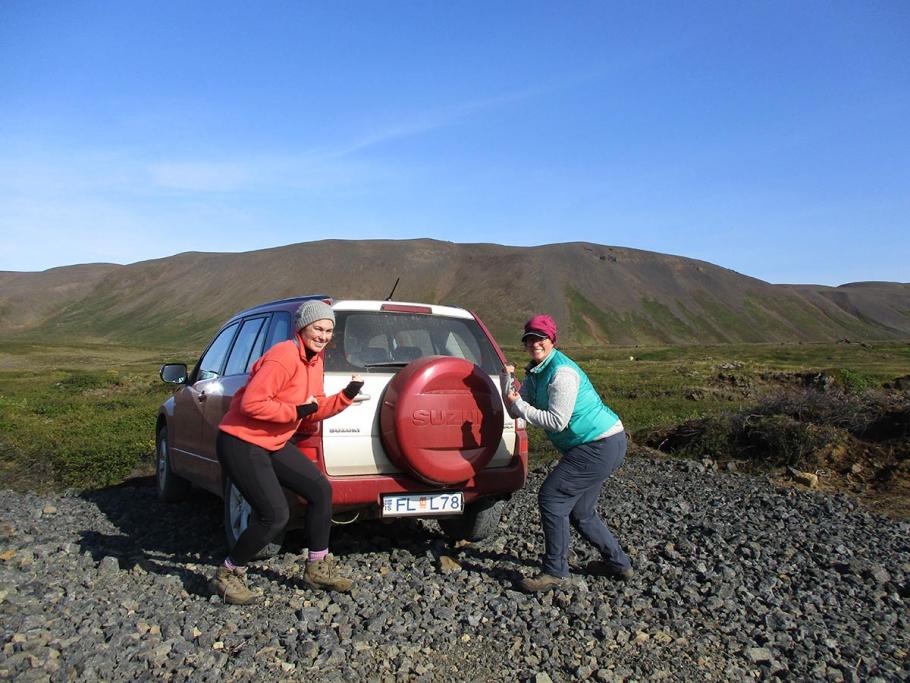This past August, CEPS scientist Emily Martin and I traveled to Iceland to study geologic features known as pit chains, a collection of circular to elliptical pits arranged in a (relatively) straight line. Pit chains form above as extensional fractures when soil drains into the void created by the fracture. The reason these Icelandic pit chains are so interesting is because they form in a similar way to pit chains on Saturn’s icy moon, Enceladus.
Pit chains on Enceladus (left) and in Iceland (right). Image credit: NASA/JPL/Space Science Institute (left) and GoogleEarth (right).
Enceladus is a tiny moon of Saturn, only 500 km across–that is about the distance across the state of Iowa—and is thought to have a subsurface ocean. Enceladus is one of the few geologically active bodies in the solar system; the other active bodies include Earth, Jupiter’s moon Io, and Saturn’s largest moon Titan. Pit chains are important features on Enceladus because they can tell us a lot about the recent geologic history of the moon. We can use information about pit chains to explore other topics we want to know more about, including how its ocean formed, how long the ocean has been there, and how long the plumes at the south pole of Enceladus have been active.
We traveled to northern Iceland to take measurements of pit chains so we could learn more about the pit chains observed in orbital images of the surface of Enceladus (taken from the Cassini spacecraft). Some of the pit chains we found in Iceland looked like linear bottomless pits, meaning pits that had all merged together.
Pits chains (left side of photo) in northern Iceland where the pits have all merged together. Image credit: E. Martin and J. Whitten.
This was not the type of pit chain we were looking for. Emily and I wanted to find pit chains where the pits were still visibly separate from one another and had their floors still intact, so we could climb into them and make measurements. Near the ends of certain fractures, we found several pits still intact. We had been searching all day, so when we finally found our first intact pits we were pretty excited.
Our first individual pit sighting! Image credit: E. Martin and J. Whitten.
We used a ground penetrating radar (GPR) system, which consists of a control unit (a computer to record and view the data), an antenna, and a wheel that measures the distance you drag the antenna on the ground. A GPR is capable of imaging changes in subsurface properties. For example, the GPR would be able to image the boundary between the soil and bedrock, or it could image a rock buried in the soil. We cannot see the subsurface from images collected by orbital spacecraft, so getting to use a GPR in Iceland gives us a perspective that we cannot get for Enceladus.
Using the ground penetrating radar system to image the location of the soil-bedrock boundary. I am holding the control unit and the antenna is the orange box on the ground. Note the two parallel pit chains in the background. Image credit: E. Martin and J. Whitten.
During our week of field work, Emily and I were lucky enough to have a trusty 4x4 vehicle to traverse unpaved roads and reach all of the pit chains we wanted to measure. Our car was nicknamed “Iron Man,” for its unique paint job (an uncanny resemblance to Iron Man’s mask!).
Our field vehicle for the week, named “Iron Man” for its resemblance to the superhero character. Image credit: E. Martin and J. Whitten.
Emily and I also encountered the “wildlife” of Iceland, namely the Icelandic sheep. All of the pit chains we visited were right in the middle of their grazing territory. They were everywhere! Most days they were our only company, but were wary of our presence and never got too close.
A pair of Icelandic sheep grazing nearby our field site. In order to get clear pictures of the sheep we had to take advantage of the zoom capability of our camera. Image credit: E. Martin and J. Whitten.
Now that Emily and I are back at the National Air and Space Museum, we are analyzing our data to understand the relationship between the size of the pits and the regolith thickness. Once we characterize this relationship, we can use the results to constrain our measurements of pit chains on Enceladus. We are planning to submit an abstract of this work at the beginning of January to present our research results at the Lunar and Planetary Science Conference in March.







